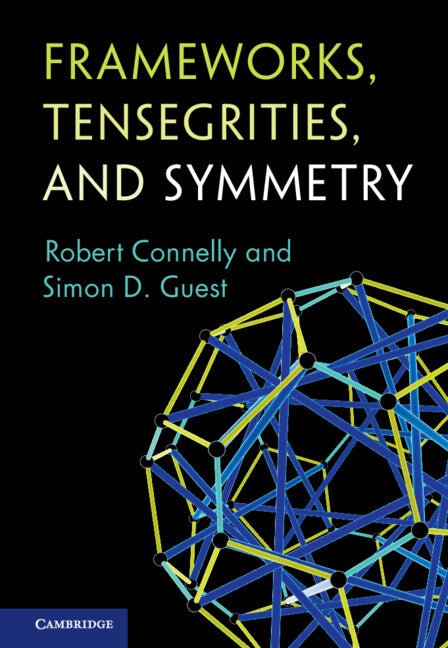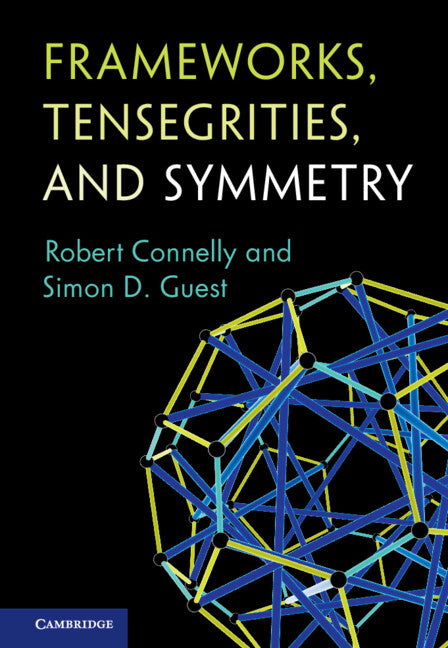Freshly Printed - allow 4 days lead
Couldn't load pickup availability
Frameworks, Tensegrities, and Symmetry
Why don't things fall down? Engineering meets mathematics in this introduction to the geometry of rigid and flexible structures.
Robert Connelly (Author), Simon D. Guest (Author)
9780521879101, Cambridge University Press
Hardback, published 27 January 2022
350 pages
25 x 17.4 x 1.9 cm, 0.69 kg
'The authors promise 'an attempt to build a bridge between two cultures' and they have done a remarkable job of this unenviable task. Requiring only a minimum of mathematical and engineering prerequisites the book develops intuitively, and rigorously, the rigidity theory of both bar frameworks and tensegrity frameworks and applies this theory to analyse built structures. Two masters of the field have carefully designed the book to move seamlessly between the analysis and synthesis of specific structures and providing the general, generic and symmetric theories.' Anthony Nixon, Lancaster University
This introduction to the theory of rigid structures explains how to analyze the performance of built and natural structures under loads, paying special attention to the role of geometry. The book unifies the engineering and mathematical literatures by exploring different notions of rigidity - local, global, and universal - and how they are interrelated. Important results are stated formally, but also clarified with a wide range of revealing examples. An important generalization is to tensegrities, where fixed distances are replaced with 'cables' not allowed to increase in length and 'struts' not allowed to decrease in length. A special feature is the analysis of symmetric tensegrities, where the symmetry of the structure is used to simplify matters and allows the theory of group representations to be applied. Written for researchers and graduate students in structural engineering and mathematics, this work is also of interest to computer scientists and physicists.
1. Introduction
Part I. The General Case: 2. Frameworks and Rigidity
3. First-Order Analysis of Frameworks
4. Tensegrities
5. Energy Functions and the Stress Matrix
6. Prestress Stability
7. Generic Frameworks
8. Finite Mechanisms
Part II. Symmetric Structures: 9. Groups and Representation Theory
10. First-Order Symmetry Analysis
11. Generating Stable Symmetric Tensegrities
A. Useful Theorems and Proofs.
Subject Areas: Structural engineering [TNC], Robotics [TJFM1], Combinatorics & graph theory [PBV], Geometry [PBM], Discrete mathematics [PBD]


